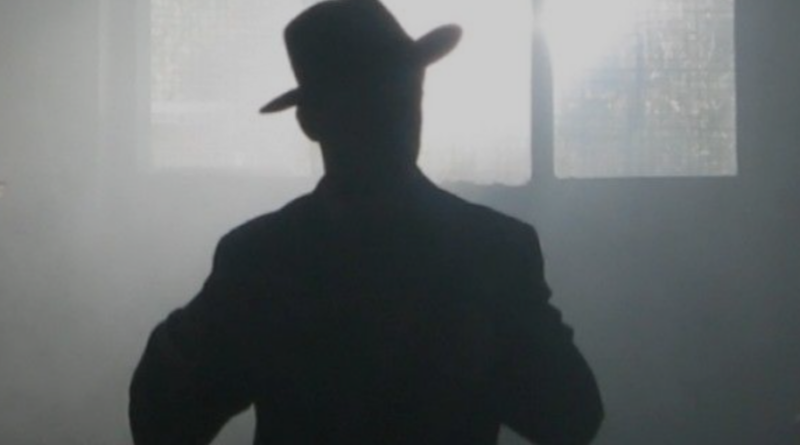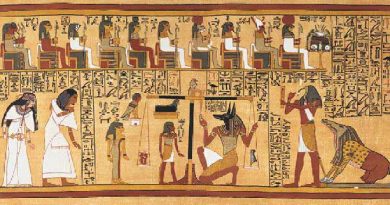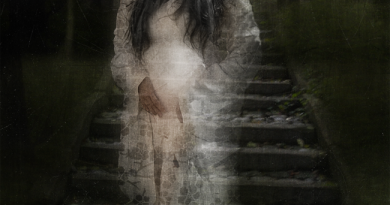Who Is the Hat Man? The Terrifying Ghost Seen by Thousands at Night
The “Hatman” is a widely reported paranormal phenomenon of a dark, featureless, shadowy figure, usually in a wide-brimmed hat and long coat, associated with sleep paralysis and terrifying hallucinations. While it has no known definitive origin, the Hatman is a common “shadow person” figure that appears during hypnagogic (falling asleep) and hypnopompic (waking up) states, a phenomenon that some believe is a shared cultural or psychological construct.
In the stillness of night, when the boundary between sleep and waking blurs, some whisper of a dark silhouette that emerges at the edge of vision. Broad-shouldered, faceless, and crowned with a wide-brimmed hat, this figure has haunted dreamers and insomniacs across the world. He is known only as the Hat Man — a ghostly entity whose mere presence stirs primal fear.
Is he a figment of troubled sleep, or something far older, crossing the veil of worlds?
Dazzle Bright Halloween Decorations Outdoor
The Haunting Figure in the Threshold
Witnesses across continents tell eerily similar tales: a shadowy form glides into vision at the foot of the bed, crouches in a doorway, or leans in from beyond a closet. Always, the hat rests upon his head — sometimes a fedora, sometimes a bowler, sometimes a broad, old-fashioned brim. His body is featureless black, an outline of a man without detail, yet many swear they feel his gaze.
He does not speak. He does not rush. He simply watches.
On forums, TikTok videos, and paranormal podcasts, accounts of the Hat Man pour in. Unlike ordinary nightmares, these encounters leave behind something deeper — the unshakable conviction that something real had entered the room.
The Science Versus the Specter
Scientists offer an explanation rooted not in ghosts, but in biology. They point to sleep paralysis, a strange overlap of waking and dreaming. In such episodes, the brain awakens while the body remains locked in REM atonia — unable to move, breathe freely, or cry out. Hallucinations, often dark and terrifying, emerge with startling clarity.
Up to 75% of sleep paralysis sufferers report visual intrusions: shadowy figures, strange beings, or a threatening presence. The Hat Man, skeptics argue, is one such hallucination — a shared illusion crafted by the brain’s chemistry and primal fear.
But if it is mere neurology, why do so many unrelated people describe the same entity, right down to the hat?
Eyewitness Encounters: When Darkness Watches Back
The Hat Man’s legends are sustained by chilling real-world testimonies.
-
Texas, USA: A man recalls waking to see a towering figure in his doorway, brimmed hat pulled low, trench coat brushing the floor. “He didn’t move,” the man swears. “But I could feel his eyes. He wanted me to know he was there.”
-
Munich, Germany: A woman describes three consecutive nights of terror. The first night, the Hat Man lingered in the corner. The second night, he stood at the edge of her bed. On the third, she woke unable to breathe as he leaned directly above her. “I thought I was dying,” she says. When she finally moved, he dissolved into the wall.
-
Queensland, Australia: A teenager saw him during the day — in the hallway mirror. “He was behind me, hat and all. I spun around and no one was there. But in the reflection… he stayed.”
Such accounts, separated by distance and culture, seem bound by a chilling thread of consistency.
Folklore’s Dark Reflections
The Hat Man may be modern in name, but his roots stretch deep into human folklore. Around the world, shadowy figures of the night have been reported for centuries:
-
The Nachtmahr (Germany): A demonic entity said to sit on the chest of sleepers, causing suffocation and dread.
-
The Ankou (Brittany, France): A tall, hat-wearing figure who harvested souls at the hour of death.
-
The Alp (Germanic legend): A mischievous nighttime spirit, always depicted wearing a magical hat that granted invisibility.
-
The Incubi (Rome & Medieval Europe): Shadow beings who pressed upon sleepers, feeding on life energy.
-
Kanashibari (Japan): Night-demons who paralyze sleepers, often interpreted today as episodes of sleep paralysis.
Across cultures and eras, the stories echo: beings of shadow, connected to paralysis, suffocation, and unseen terror. The Hat Man may simply be our modern mask for something ancient.
An Archetype in the Collective Shadow
Psychologists point to the idea of archetypes — primal figures that emerge from humanity’s collective unconscious. Some believe the Hat Man is one such archetype: the Watcher, the Judge, the Harbinger. He appears in times of stress, trauma, or crisis, as if summoned by human suffering.
But in paranormal circles, a darker interpretation rules: he is not summoned by us. He chooses to come. A predator, perhaps, feeding on fear itself. A psychic vampire who immobilizes his victims, draining them with silence and dread.
Why the Hat?
The detail of the hat troubles researchers most. Why would countless witnesses describe not just a man-shaped shadow, but one wearing a distinctly human accessory?
Some folklorists suggest the hat signifies authority: undertakers, plague doctors, even the Grim Reaper are all depicted with head coverings. The hat transforms him from formless shadow into something ranked, powerful, purposeful.
Others argue the hat is an anchor to memory. The human mind, struggling to interpret the unknowable, dresses him in the symbols of power it understands. But what if it is not the brain inventing the hat — what if the hat is his calling card?
Psychic Predator or Guardian Spirit?
Interpretations of the Hat Man vary as widely as the encounters. For some, he is a demonic parasite who appears at moments of weakness. For others, he is a harbinger — appearing before death, illness, or tragedy, marking those whose lives are about to change.
And then there are those who see him differently still: not as an attacker, but as a sentinel, watching over the thresholds between life and death. In this view, his silence is not malevolence but protection — though terrifying, he might be standing watch against something worse.
How to Protect Yourself from the Hat Man
Paranormal enthusiasts often suggest defenses against shadow entities:
-
Resisting fear: Some claim the Hat Man thrives on terror, and that facing him with calm reduces his presence.
-
Light and protection rituals: Religious symbols, prayers, or protective charms are said to disrupt his visits.
-
Breaking sleep paralysis: Learning to recognize and interrupt paralysis episodes may “banish” him from appearing.
Still, many experiencers report that no matter what rituals or precautions they take, he sometimes returns.
Between Worlds and Minds: Where Truth Hides
Is the Hat Man a shared hallucination born of fragile neurology? A collective archetype etched into the human subconscious? Or a real interdimensional visitor who has haunted us for centuries?
Science insists on the first explanation. Folklore whispers the second. Believers swear the third.
What remains certain is that for those who have seen him, the Hat Man is no theory. He is memory — sharp, real, unforgettable. A shadow that refuses to be explained away.
And perhaps, in the hush of midnight, the most chilling thought is not that he might be a dream… but that he might be watching even now, from the corner of the room.



